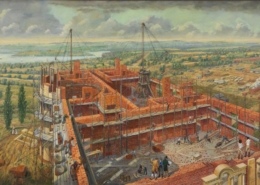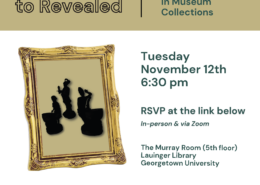Slavery & the Gap in Archives
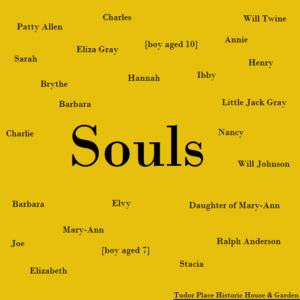
When you want to write about history, where do you start?
Archival material?
What if it doesn’t tell the full story?
Not even a little?
Scroll through to learn more about the complex relationship between archives and slavery.

The above image (captioned “Souls”) represents individuals the Peters enslaved at Tudor Place prior to 1860. These people are known to historians today because their names appear in written documents or were passed down by word. This is not a complete list of those enslaved by Thomas and Martha Peter, or the extended Peter family.
The Tudor Place staff is continuously researching in the archive and beyond the archive to fill in the stories about Elizabeth, Patty Allen, Joe, and the other individuals listed here. In some cases, the staff was able to learn more about their lives after emancipation.
But, say the Tudor Place Archive was our only glimpse of the lives of enslaved people, like Ralph Anderson or Will Twine, whose knowledge, labor, and skills were exploited here.
How much would Tudor Place know?
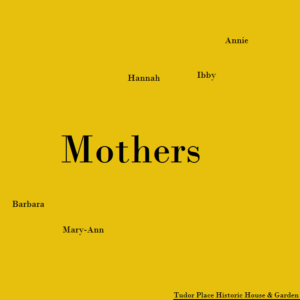
The names of individuals like Ibby and Annie come from account books, diaries, letters, runaway slave ads, and reminiscences.
That means the archive can tell researchers about economics, labor, or parentage. It also means that the few stories of enslaved people at Tudor Place are framed almost exclusively, though not entirely, by the lens of the family who enslaved and exploited them.
A Peter family member may recall the “good food” that Patty Allen prepared and “sent into the dining room”…
but the archive cannot speak about Patty Allen’s favorite meal to share with her husband on a holiday.
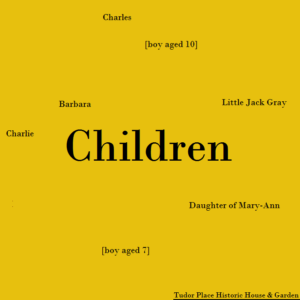
The archive does not even hold the name Mary-Ann gave her daughter.
The complexities go beyond tracking what was written down and what wasn’t. Because slavery is inherently dehumanizing, the Peters’ recordkeeping about people they enslaved is incomplete at best, and dehumanizing at worst.
By only recording labor, prices, parentage, and stories told primarily through the enslavers and not the enslaved, the Peters put the inhumanity of slavery into the archive. Replicating the violence of talking about enslaved people only through “what we know” from archives is a problem across all American historical institutions.
These are called “silences.”
It is Tudor Place’s job to stop replicating the silences.

Tudor Place’s work to fill the gaps in the archive includes:
- Archaeological excavation
- Recording oral histories with descendants of those enslaved at Tudor Place
- Exploring other archives and repositories to try and fill in the gaps at Tudor Place
- Collectively researching the community of free African Americans living in Georgetown in the 18th and 19th centuries alongside other Georgetown institutions
- Reading primary documents closely to recognize gaps
Join us in stopping silence. You can:
- Look at archaeology left in the ground around known slave sites and sites of free Black communities, like the Yarrow Mamout Project in Georgetown featuring the work of Dr. Mia Carey and the DC Historic Preservation Office. Yarrow Mamout was a free Muslim Black man living in Georgetown in the 1700s.
- Listen to folk songs or folk stories passed through generations, like those presented at the National Archives by Dr. Henry Louis Gates, Jr. and Dr. Maria Tartar.
- Read, hear and process the words of those who knew enslavement, like Ranger Kevin at the Frederick Douglass National Historic Site reading from Frederick Douglass’ autobiography on Facebook Live.
- Read literature of those who live with the legacies of slavery, like Dr. Saidiya Hartman’s work which intertwines enslavement and memoir.



